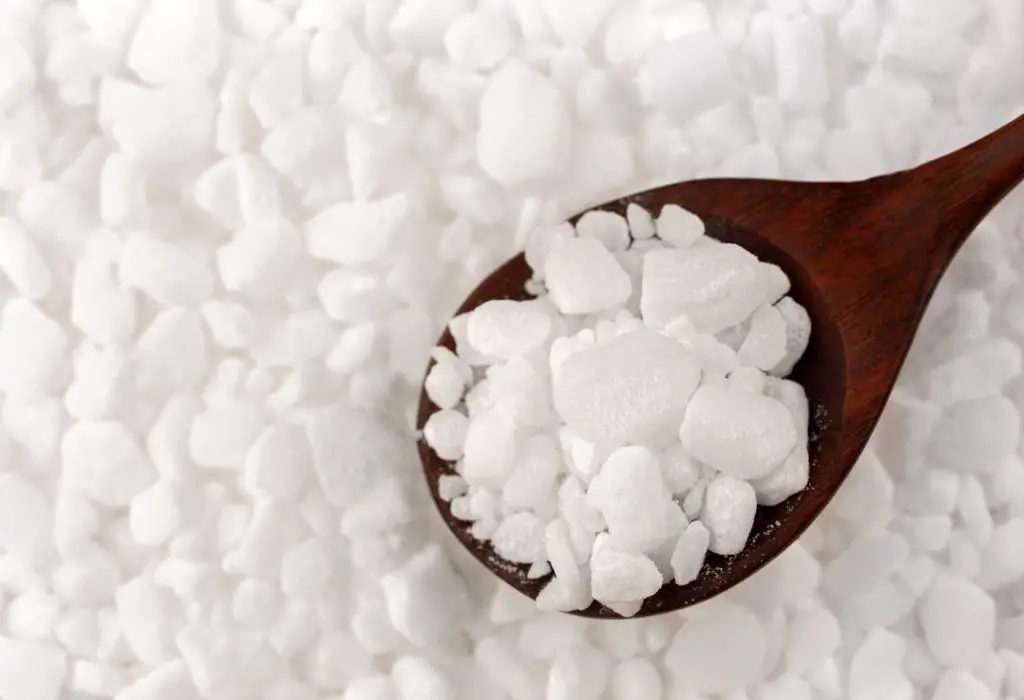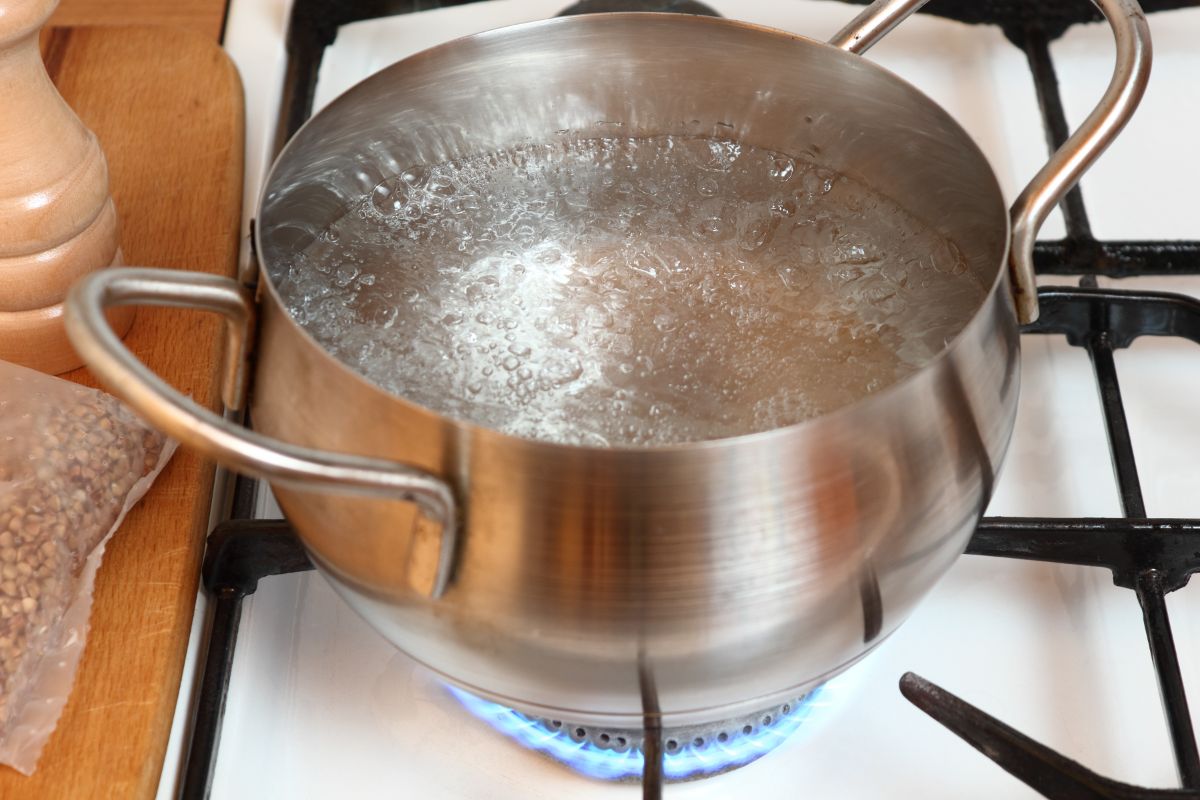When you buy via links on our site, we may earn a small commission at no additional cost to you.
Wondering how to remove sodium from softened water? Here are the five proven and effective ways.

Water softeners make use of small amounts of salt to soften hard water. But unfortunately, not everyone likes to drink salt in their water.
For example, hypertensive patients, or those who have high blood pressure and need to follow a low-sodium diet, are cautious about the water they drink.
The amount of sodium added to tap water by water softeners is determined by the “hardness” of the water. It is important to reduce salt levels in your drinking water.
Salt is a mineral that is naturally found in food and water. As an important nutrient for your health, it helps maintains optimal blood pressure levels and aids in nerve and muscle function. But, as with other things, too much salt is not good for health.
To help you remove salt from water, I will cover the different methods of removing salt from soft water in this article, but first, let’s discuss how salt can get into your drinking water.
How Salt Can Get Into Drinking Water
Salt can get into drinking water through various ways.
Sodium is naturally discharged into water by mineral deposits in ground and surface water, as well as seawater. Sodium chloride is an element that is naturally present in seawater, surface water, and groundwater.
In coastal areas, seawater can infiltrate freshwater sources, such as rivers and underground aquifers, leading to elevated salt levels.
Additionally, salt can enter drinking water through the use of road salts during the winter months.
Road salts can run off into surface water sources, leading to increased salt levels in drinking water supplies.
Finally, salt can also enter water sources through industrial activities and mining operations, which can release salt into waterways and groundwater sources.
Water softeners also add a small quantity of salt (sodium chloride) to tap water. While most people are unaffected by the salt level in softened water, some people require low sodium diets or just prefer to remove sodium from their water.
If you want to enjoy the benefits of purified water but don’t want sodium in your drinking water, you will need to know how to remove salt from your water.
The following are some of the methods available for removing salt from softened water.
How to Remove Salt from Softened Water

When water is softened using a salt-based water softener, sodium is added to the water as part of the ion-exchange process, which replaces hardness minerals with sodium ions.
While this can make the water more palatable, some individuals, such as those with high blood pressure or on a low-sodium diet, may need to remove the excess sodium from the softened water.
There are various methods to remove sodium from softened water, including reverse osmosis, distillation, and using a deionization resin.
These methods can effectively remove sodium, but they may also remove other beneficial minerals from the water. It’s important to consider the pros and cons of each method before choosing a sodium removal technique.
1. Reverse Osmosis (Membrane Separation)
One of the most effective ways to remove sodium from softened water is to use the Reverse Osmosis method.
This method removes all total dissolved particles, including sodium mineral ions, from water by passing it through a semipermeable membrane. This procedure is even used in large-scale seawater desalination applications to filter salt from water.
The holes in the membrane allow the passage of hydrogen and oxygen, which form water – H2O.
One of the most significant advantages of this method is that it is a highly effective and natural way of removing salt from softened water. Reverse osmosis systems, on the other hand, drastically reduce the number of contaminants in water.
2. Thermal Distillation
Thermal distillation is a process of purifying water by heating it to the point of vaporization, and then condensing the vapor back into liquid form, leaving behind impurities and minerals.
There are two main types of thermal distillation: multi-stage flash (MSF) distillation and multi-effect distillation (MED).
In MSF distillation, seawater is heated in a series of chambers at different pressures, causing it to evaporate and condense multiple times.
In MED, seawater is heated in a series of chambers, each at a slightly lower pressure than the previous one, causing the water to evaporate and condense multiple times.
Both MSF and MED are energy-intensive and require large amounts of heat, usually generated by burning fossil fuels. Despite the high energy requirements, thermal distillation is an effective way to remove impurities and minerals from seawater and produce freshwater for drinking and other uses.
3. Electrodialysis
Electrodialysis is a water treatment process that utilizes an electric current to remove dissolved ions from water.
The process involves passing water through a series of membranes that separate positively and negatively charged ions. The membranes have selective permeability, allowing only certain ions to pass through while blocking others.
The application of an electric field to the membranes helps to push the ions through the membrane, separating them from the water.
Electrodialysis is particularly effective in removing dissolved salts from water, including sodium ions from softened water. It is commonly used in industrial settings for desalination and purification of process water. However, the process can be energy-intensive and may not be practical for residential use.
Additionally, electrodialysis may also remove beneficial minerals from the water, which can impact the water’s taste and health benefits.
4. Capacitive Deionization Systems
This method differs from reverse osmosis membrane filtration in that it only requires very low voltages (the voltage demand is less than that produced by a single AA battery).
Capacitive deionization (CDI) is a water treatment technology that removes ions from water by using an electric field to attract and trap ions on the surface of porous electrodes.
The system operates using two electrodes, one positively charged and the other negatively charged, that are separated by a porous material. When a voltage is applied across the electrodes, ions are attracted to the surface of the electrodes and are held there by electrostatic forces.
CDI is an energy-efficient alternative to traditional ion exchange technologies for removing dissolved salts from water. It is effective in removing sodium ions from softened water and other dissolved salts. CDI systems are used in a variety of applications, including desalination, water purification, and wastewater treatment.
One advantage of CDI systems is that they require less maintenance than other water treatment technologies, as they do not require the replacement of resins or membranes.
However, CDI systems have lower removal efficiency compared to reverse osmosis and other more traditional water treatment methods.
Additionally, CDI systems may not remove all contaminants, such as bacteria or viruses, from water. Therefore, it is important to consider the specific needs and requirements of your water treatment application when evaluating the suitability of a CDI system.
5. Potassium Chloride
Potassium chloride is a type of salt that is used as an alternative to sodium chloride in water softening systems. Like sodium chloride, it is an ionic compound that can replace the hardness minerals in water with potassium ions, resulting in softened water.
Potassium chloride is often used as an alternative to sodium chloride in water softening systems for individuals who are on a low-sodium diet or for those who wish to reduce their sodium intake for other reasons. It is also an environmentally friendly option, as it does not contribute to the buildup of sodium in the soil or in waterways.
Potassium chloride is also required for healthy plant and animal growth, including human growth.
However, there are some drawbacks to using potassium chloride in water softeners. Potassium chloride is more expensive than sodium chloride, which can increase the cost of operating a water softening system.
Additionally, potassium chloride can be less effective than sodium chloride in some water softening applications, particularly in areas with high levels of iron or manganese in the water.
How to Remove Salt from Sea Water
The oceans span over 70% of the Earth’s surface, and 97 % of all water on and in the Earth is salty, implying that our planet has a lot of salty water.
The density of ocean water can be affected by salinity: water with higher salinity is denser and heavier and will sink under warmer, less salty water. Ocean currents may be affected as a result of this. It may also have an impact on marine life, which may need to regulate their intake of saltwater.
If you are looking for the process of removing salt from seawater, there are many ways to do this. The main methods are desalination and natural distillation.
Desalination
Desalination is the process of removing salt and other minerals from seawater, brackish water, or other sources of water that are too saline to be used for drinking or irrigation purposes.
The process involves the use of various technologies, such as reverse osmosis, distillation, and electrodialysis, to remove the dissolved salts and other impurities from the water.
Desalination is becoming an increasingly important solution for water scarcity and is being used in many parts of the world, especially in areas where freshwater resources are limited.
Distillation desalination is one of humanity’s earliest types of water treatment, and it is still widely used around the world today.
Many ancient civilizations used this procedure to transform seawater into drinking water aboard their ships.
Desalination plants are now used to convert seawater to drinking water on ships and in many dry regions of the world, as well as to treat water that has been contaminated by natural and manmade toxins in other areas.
Distillation is maybe the only water treatment method that entirely removes the largest range of contaminants in drinking water.
As reported by the International Desalination Association, 18,426 desalination plants were operational in June 2015, making 86.8 million cubic meters each day and providing water to 300 million people around the world.
The United States is one of the most important users of desalinated water among developed countries, especially in California and sections of Florida, where the amount climbed by 10.71 percent in two years from 78.4 million cubic meters in 2013.
However, desalination is energy-intensive and can be costly, making it less accessible in many regions.
Natural Distillation
Natural distillation is a process in which water is purified naturally through the water cycle.
The sun’s heat causes water to evaporate from bodies of water, leaving behind impurities and minerals. The evaporated water rises into the atmosphere and forms clouds.
As the clouds move, they cool, and the water vapor condenses back into liquid droplets, forming precipitation like rain or snow.
The precipitation is then collected in streams, rivers, lakes, and underground aquifers, and the cycle repeats. This natural distillation process helps to purify water by leaving behind impurities and minerals, making it safe for consumption.
However, it’s important to note that natural distillation may not remove all contaminants, and additional treatment may be necessary for safe drinking water.
Desalination has occurred naturally on Earth since the creation of the seas. The sea’s water evaporates and then condenses to form pure rainwater.
Desalination has been used by humans in the form of distillation for more than 2000 years. This method was used to purify seawater many centuries ago, when Greek sailors used an evaporative method to purify seawater.
When it comes to removing salt from seawater, this is the simplest and most cost-effective method. Natural distillation is done by drying seawater in the sun, which causes water to evaporate and condense, resulting in freshwater.
Does Boiling Water Remove Salt?

Boiling water does not remove salt or other nutrients; the procedure increases the salt concentration in the cooking pot.
When the water reaches the boiling point, it begins to evaporate, which reduces the volume of water in the pot. The salts have a much higher boiling point and therefore remain in the pot.
As a result, boiling water that contains salt makes it even saltier because the ratio of sodium to water changes in favor of sodium. If you are on a low-salt diet for health reasons, check with your doctor to see if any of these methods would be necessary.
Despite the fact that the amount of heat needed to boil saltwater is less than that required to boil fresh water, boiling water will not eliminate the salt content.
To make the water fit for human or animal consumption, the salt needs to be removed using other methods, as explained above.
Sodium has a boiling point of 621 degrees Fahrenheit, while the boiling point of water at sea level is 212 degrees Fahrenheit. Boiling water will eliminate almost 100 percent of the contaminants and pathogens in the water, but not salt.
FAQ
What is softened water?
Softened water is water that has had the hardness minerals (such as calcium and magnesium ions) removed through a water softening system.
Why would I want to remove sodium from softened water?
Some people may want to remove sodium from softened water for health reasons, such as if they are on a low-sodium diet or have high blood pressure. Additionally, some municipalities may have restrictions on the amount of sodium that can be discharged into the sewer system.
How can I remove sodium from softened water?
There are a few methods for removing sodium from softened water, including reverse osmosis, electrodialysis, and capacitive deionization systems. Another option is to use potassium chloride instead of sodium chloride in the water softening system.
Are there any downsides to removing sodium from softened water?
Yes, removing sodium from softened water can increase the hardness of the water, which can lead to other issues such as limescale buildup in pipes and appliances. Additionally, some methods of removing sodium can be expensive and require additional equipment. It’s important to weigh the benefits and drawbacks of sodium removal before making a decision.
So, Now You Know How to Remove Sodium from Softened Water
In conclusion, while salt-based water softeners are an effective way to remove hardness minerals from water, they add sodium to the water which can be a concern for those on a low-sodium diet or with certain health conditions.
However, there are several methods to remove sodium from softened water, such as electrodialysis, capacitive deionization, and the use of potassium chloride as an alternative to salt.
It’s important to consider the specific needs of your household and consult with a professional to determine the best solution for removing sodium from your softened water.
Read Next:
